
Home » Judging the Curly-Coated Retriever
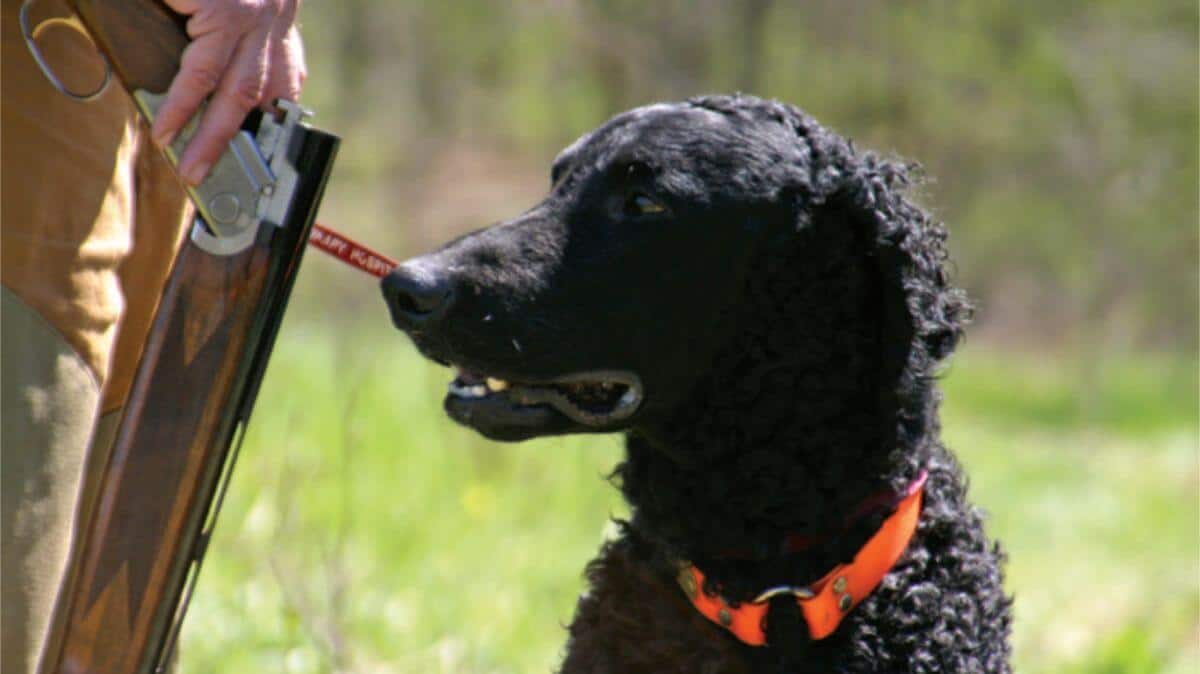
This article was originally published in Showsight Magazine, August 2013 issue.
The Curly-Coated Retriever is a breed with a long and cherished history as one of the oldest of known retriever breeds. In the show ring, the breed should exemplify the virtues listed in the standard, and should never be judged as a “generic looking” retriever. This is a distinct breed with specific traits that provide the desired overall type that is sought by breed fanciers. First and foremost, the breed should exhibit Curly-Coated Retriever breed type. A good moving dog with little or no breed type is not a Curly-Coated Retriever.
The overall first impression of this breed should be of a balanced, athletic, durable hunting retriever. The breed should appear to have good length of leg, providing the necessary upstanding quality desired. An appearance of a squat or lower stationed to the ground dog does not reflect the upstanding appearance and is not typical of this retriever. The depth of chest from withers to elbow should be equal to the length of leg from elbow to ground. The overall proportion is slightly off square with the deep ribcage going well back into the short loin. The mass and bone should never appear spindly or massive, but rather show a robust and strong balance exuding grace and symmetry.
The breed standard calls for 23-25 inch bitches and 25-27 inch males. They are allowed to be outside of this range only if they are “clearly superior” specimens of the breed, which entails having the proper outline and proportion, correct coat, and superior movement. In order to have correct bone and mass, a bitch should weigh approximately 60-85 pounds and the males weighing approximately 70-95 pounds; weight being dependent on the height of the Curly-Coated Retriever at the withers. It is not uncommon for judges to be adjudicating various height ranges in the same ring and same class. And judges should be mindful of selecting specimens possessing the best overall breed type rather than purely on size alone.
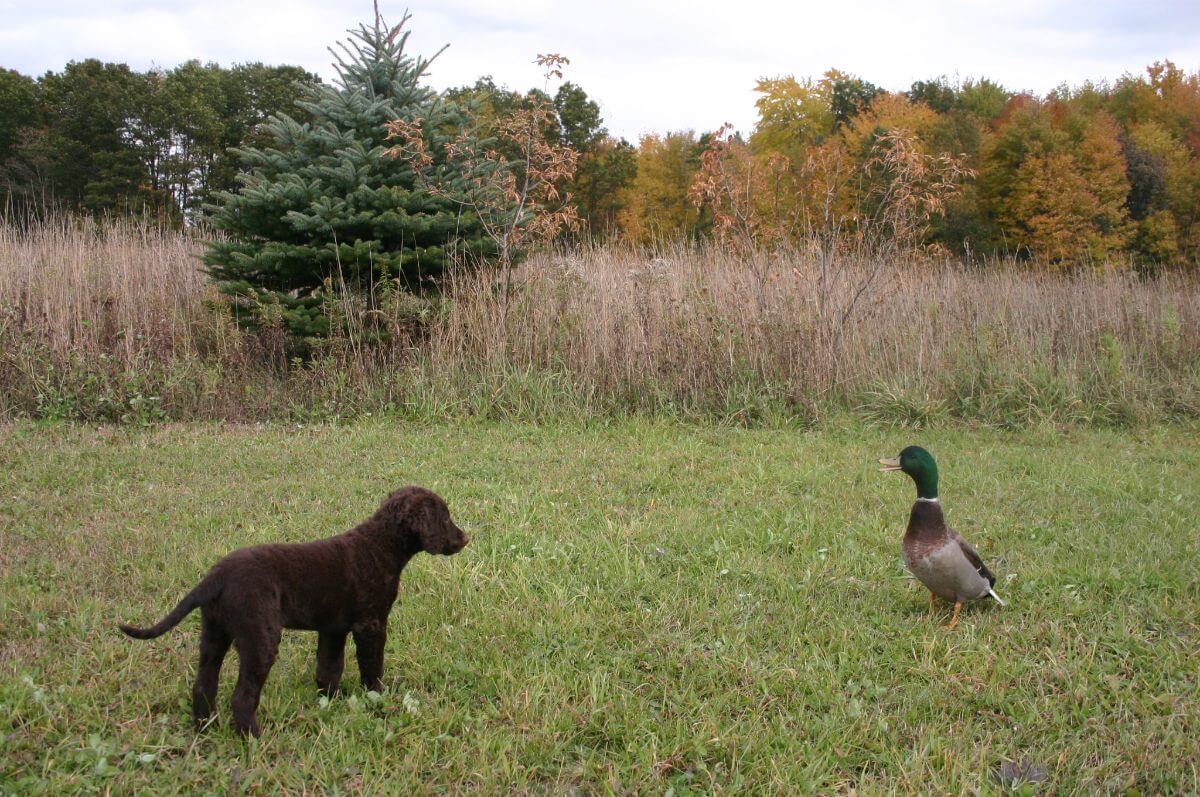
Upon first examination of the Curly headpiece, the impression should be of a wedge-shaped head possessing parallel planes. The length of muzzle from tip of nose to center of stop should equal the length of backskull from the center of the shallow stop to the occiput. The breadth across the flat or nearly flat backskull at the occiput to the ears should equal the length of backskull. And the depth of the backskull on the side of head also should equal the length of backskull. All of these proportions give the headpiece a wedge-shaped outline. The slight tapering of the headpiece from backskull toward the muzzle is smooth with no inclination toward any kind of cheekiness or dewlap. This smooth transition allows for good breadth of muzzle, open and large nostrils, and workman-like jaws able to carry large fowl or small furred game. The appearance of the wedge shape is apparent looking down from above as well as from the side, ending with a mild tapering of the muzzle at the nose.
The breed standard states: “…A Curly sometimes appears aloof or self-willed, and, as such, is often less demonstrative, particularly toward strangers, than the other retriever breeds…”
Best stated by Canadian Curly adorer, Melissa Kime, “While she is not as comfortable being at the center of attention as her Labradorable siblings, she is extremely comfortable just being. She doesn’t want a ticker tape parade thrown in her honor, but she is happy to be there at the parade. A Labrador is not happy until the soiree thrown in his honor has begun while a Curly wonders ‘why all the fuss?’
She is not disinterested, she is unconcerned. She is not difficult to train, she is quick to bore. She is not out of the picture, she is happy to be a part of the background, just squeak, squeak, squeaking her tennis ball.
There’s nothing fancy about my Curly. She is very happy to please so long as what pleases me also happens to please her.”
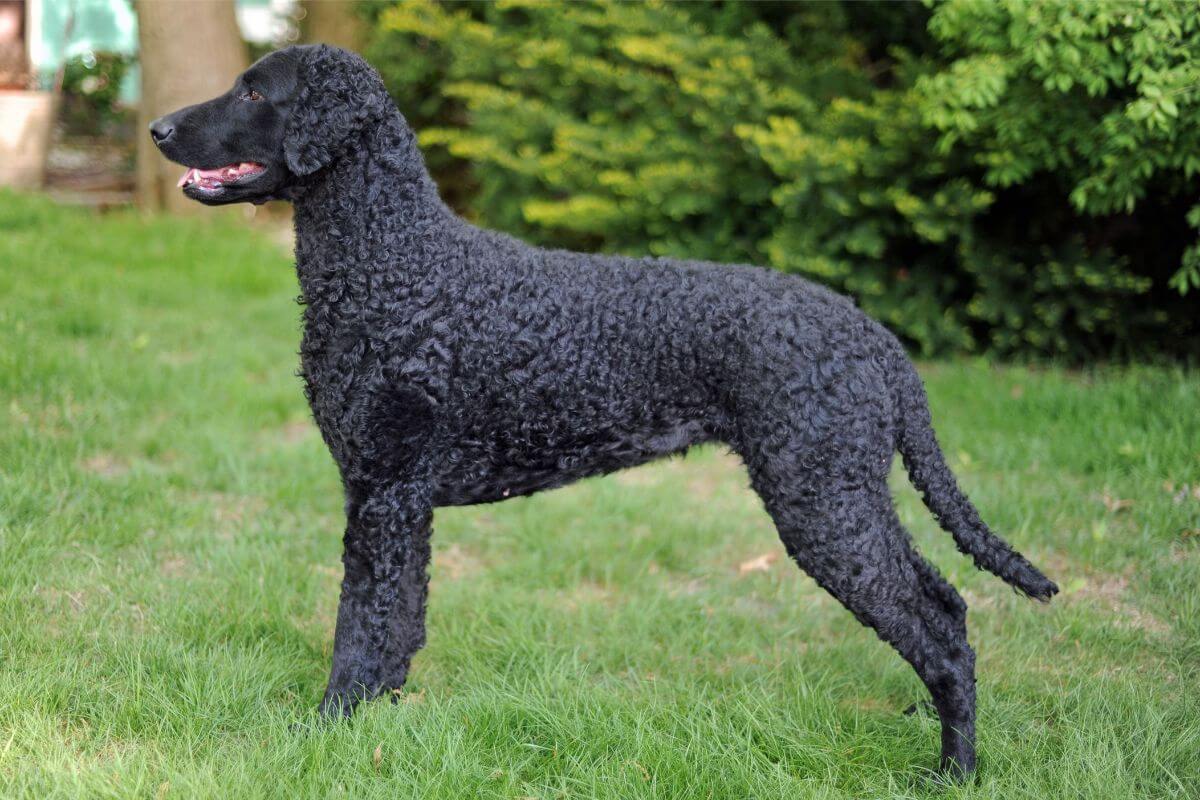
They are eligible to participate in many hunt tests and field trials through AKC, UKC, and North American Hunting Retriever Association (NAHRA). They have recently been included in not only the retriever stakes of these tests, but the spaniel hunt tests as well, celebrating their attributes as an excellent upland hunter. They are in the minority of numbers at many tests, but the trend is changing, more are representing all over the US each weekend. The Master Hunter (MH) title is the highest level in the AKC hunt test system.
For perspective, the breed has only had 11 Master Hunters in its history, but 6 of them have earned their titles in the last five years with more on the way to their titles this year. Evidence of their versatility, of the 11 Master Hunters, 8 are conformation show Champions (Ch), one with a Grand Champion (GCH), and most have additional obedience, agility, and therapy dog titles as well. There are approximately 120 AKC Junior Hunters in the breed and 28 Senior Hunters, also numbers that are steadily increasing. We recently had a GCH member of the breed earn the breed’s first Qualified All Age status at an all-breed field trial and have had a handful with field trial ribbons throughout the breed’s history.
The Curly-Coated Retriever Club of America hosts an annual all-breed AKC hunt test. The club also endorses three levels of working certificate field tests and an upland hunting certificate test which are held by local clubs and in conjunction with the National Specialty each year. Larger numbers of curlies may never see an organized field test, but are skilled hunting companions in homes and in fields all over the country. They are utilized for both waterfowl (ducks and geese) and upland game (pheasant, grouse, quail, etc.) and can track wounded game as well. They can be involved in hunting furred game as well such as rabbits and squirrels. Once an avid outdoorsman spends a day in the field with a curly, they may never have another breed.
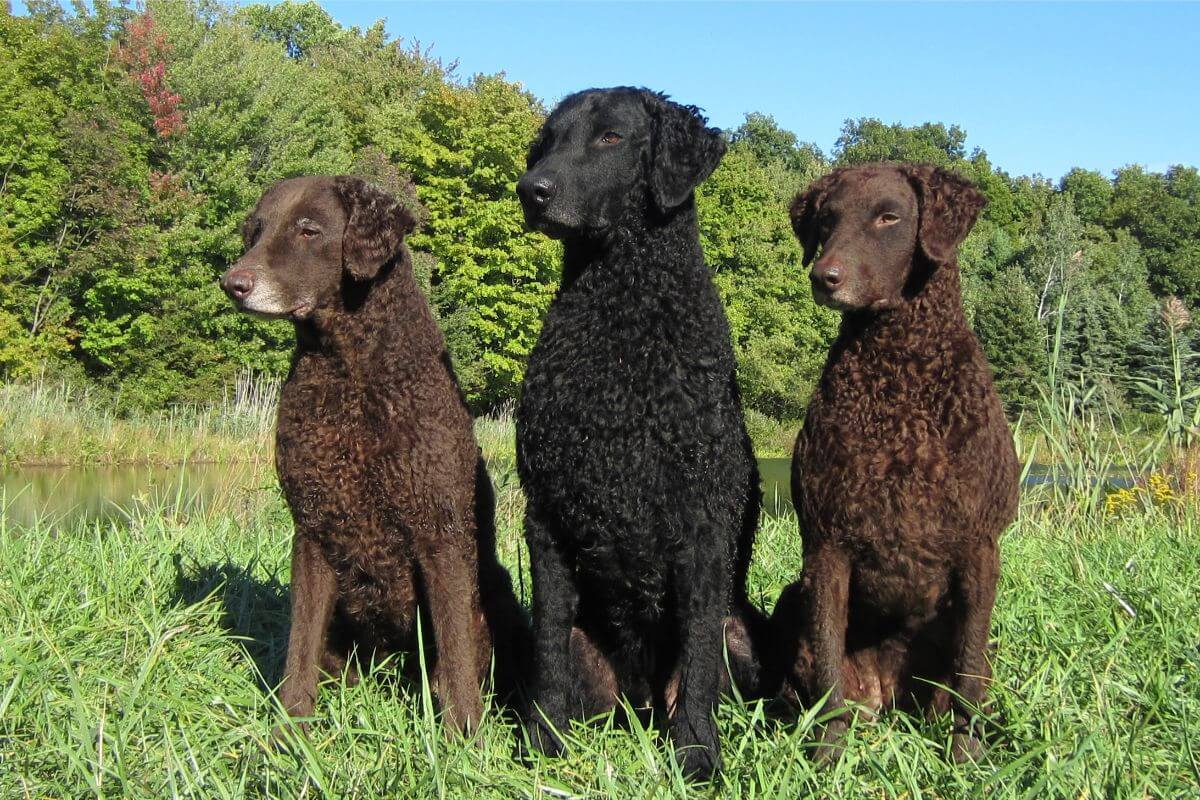
Once an avid outdoorsman spends a day in the field with a curly, they may never have another breed.
As a judge, analyze the standard for not just the what and the where, but also the why? Why is each part of the standard written, what is it advantage in the field? Does that curly have a strong enough rear that can still propel them properly at 12 years old? Can the dog you are evaluating go all day in the field? Not too many curlies are just standing around while hunting. Do they look functional while moving, not just stacked?
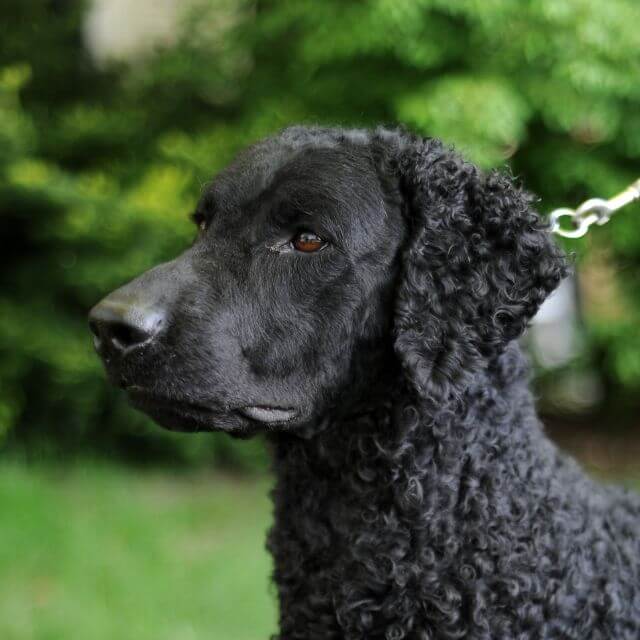
Their abilities are not just limited to the field. As versatile, athletic dogs with a quick mind and a big heart, Curlies can be successful in agility, obedience, rally, lure coursing, dock diving, tracking, and many other venues. They are loving, loyal companions to the niche of people who have them. And, take heed, Curlies are like potato chips, one usually leads to more!